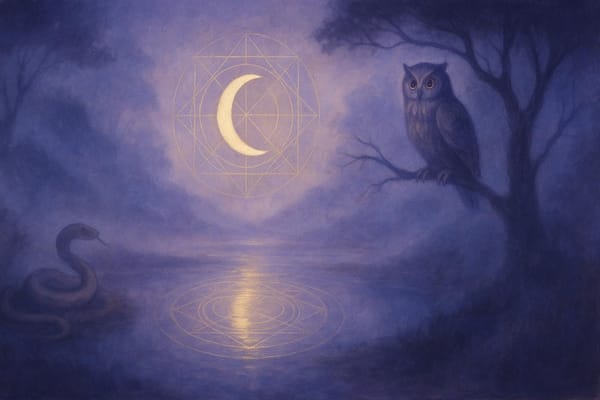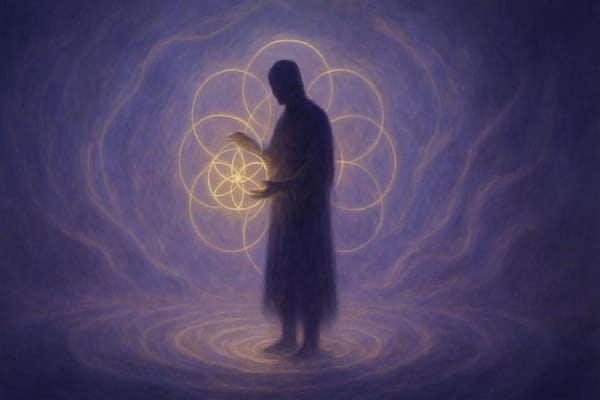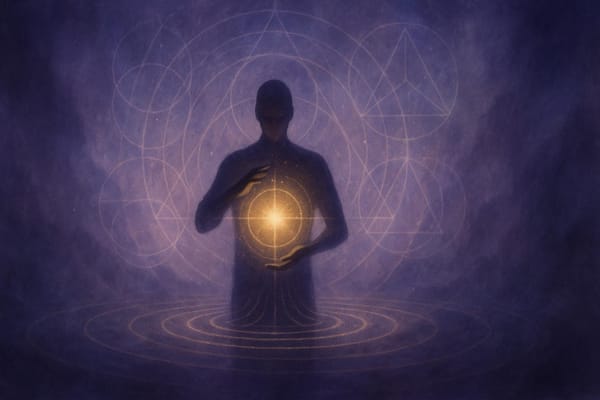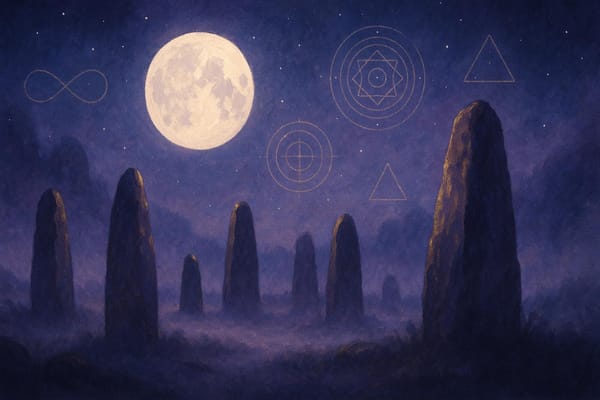Double-Slit Experiment: What It Reveals About Reality
Explore how the double-slit experiment reveals the profound effects of observation on particle behavior and challenges our understanding of reality.
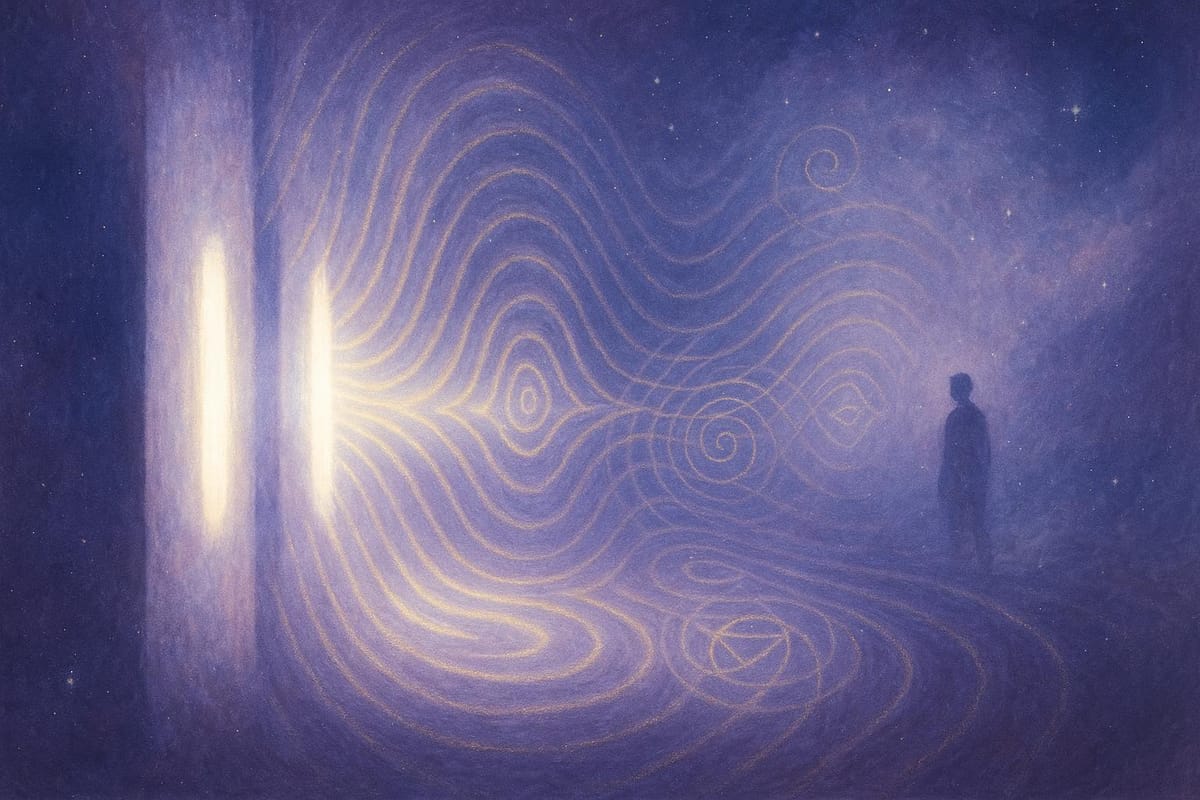
The double-slit experiment is one of the most important discoveries in physics, revealing how particles like electrons and photons can behave as both waves and particles. It challenges our understanding of reality by showing that observation itself changes how particles act.
Key Takeaways:
- Wave-Particle Duality: Particles form interference patterns (waves) when unobserved but behave like particles when measured.
- Observation Changes Reality: Measuring a particle’s path eliminates the wave-like interference pattern.
- Quantum Entanglement: Particles can remain connected across distances, influencing each other instantly.
- Time and Causality: Delayed-choice experiments suggest decisions made after a particle’s path is determined can affect its earlier behavior.
This experiment has expanded our understanding of quantum mechanics, linking observation to particle behavior and even raising questions about consciousness, causality, and the nature of reality itself.
The Quantum Experiment that Broke Reality | Space Time | PBS Digital Studios
How the Double-Slit Experiment Works
The double-slit experiment is a straightforward setup that reveals some of the most fascinating aspects of quantum mechanics. It involves three key components: a coherent light source (like a laser), a plate with two parallel slits, and a detection screen placed behind the slits.
Wave and Particle Behavior
This experiment brilliantly illustrates the dual nature of light. When a laser beam passes through the two slits, it produces an interference pattern on the screen. Instead of forming just two bright spots (as you’d expect if light behaved purely like particles), the screen displays alternating bright and dark bands.
Things get even more intriguing when you replace light with individual particles, like electrons. The Hitachi team conducted this variation by firing electrons one at a time through the slits. Amazingly, even when particles pass through individually, they eventually form the same interference pattern.
"Nature does not know what you are looking at, and she behaves the way she is going to behave whether you bother to take down the data or not." - Richard Feynman
Understanding Interference Patterns
The interference pattern arises because particles exhibit wave-like behavior. Waves from the two slits interact in two key ways:
| Interaction Type | Result |
|---|---|
| Constructive Interference | Bright bands |
| Destructive Interference | Dark bands |
Here’s the twist: the interference pattern only appears when the particles’ paths remain unobserved. If detectors are added to track which slit each particle goes through, the wave-like behavior vanishes. Instead, the particles form two distinct lines on the screen, as if they were behaving like classical particles.
This dramatic shift - from wave-like interference to particle-like behavior - happens because the act of measurement disturbs the particles. Observing their path fundamentally changes their quantum state, highlighting how deeply measurement itself influences quantum systems.
The Impact of Observation
Effects of Measurement
The double-slit experiment highlights a core idea in quantum mechanics: measuring a particle changes its behavior. If you try to determine a particle's path, the interference pattern vanishes.
In 2007, Alain Aspect's team used beamsplitters to explore this phenomenon. Their findings are summarized below:
| Measurement Condition | Observed Behavior | Result |
|---|---|---|
| Path Known | Particle-like | No interference pattern |
| Path Unknown | Wave-like | Clear interference pattern |
| Path Info Erased | Wave behavior restored | Interference pattern returns |
"I can't prove that isn't what occurs, but 99.999% of physicists would say that the measurement – i.e. whether the beamsplitter is in or out – brings the observable into reality, and at that point the particle decides whether to be a wave or a particle." - Truscott
This behavior has fueled debates about whether consciousness plays a role in these outcomes.
Consciousness and Measurement
The effects of measurement have led to intriguing questions about the observer's influence on wave function collapse. Some theories propose that consciousness might trigger the collapse, but current evidence points to physical interactions as the cause.
In 2007, researchers at Australian National University tested Wheeler's experiment using helium atoms. They introduced a quantum random-number generator to control a second laser pulse, which recombined quantum states. The results were telling:
- Without the second pulse: Each momentum state showed a 50% detection probability.
- With the second pulse: A clear sine-wave interference pattern appeared.
These findings suggest that "which-path" information - not conscious observation - determines particle behavior. Werner Heisenberg put it this way:
"The observer has, rather, only the function of registering decisions, i.e., processes in space and time, and it does not matter whether the observer is an apparatus or a human being; but the registration, i.e., the transition from the 'possible' to the 'actual,' is absolutely necessary here and cannot be omitted from the interpretation of quantum theory."
Wave function collapse happens when particles interact with measuring devices, not because of human consciousness. The term "collapse" refers to the wave, which is spread out in space, suddenly becoming localized when it interacts with another particle.
Advanced Concepts and Findings
Understanding Quantum Entanglement
Quantum entanglement adds a fascinating twist to the already complex double-slit experiment. It demonstrates how particles can remain connected, no matter how far apart they are. When two particles become entangled, their behaviors are linked in a way that defies classical explanation - even when passing through the slits.
Scientists have successfully observed this phenomenon in molecules containing up to 2,000 atoms (about 25,000 atomic mass units). This connection between particles opens the door to exploring how time itself plays a role in these quantum interactions.
Time and Particle Behavior
The relationship between time and particle behavior in the double-slit experiment unveils some of the most counterintuitive aspects of quantum mechanics. Delayed-choice experiments, for instance, show that decisions made after a particle has already passed through the slits can appear to influence its earlier behavior.
In 2023, researchers took this concept further by demonstrating an interference pattern in time. The experiment involved the following components:
| Component | Function | Duration |
|---|---|---|
| Indium Tin Oxide Screen | Switched from transparent to reflective | 200 femtoseconds |
| Pump Laser Pulse | Created temporal slits | Variable |
| Probe Laser Beam | Detected the interference pattern | Immediate |
This groundbreaking setup revealed that quantum effects aren't confined to space - they also occur in time. Such findings challenge traditional ideas about causality and suggest that the rules governing particles may be far stranger than once thought.
Links to Simulation Theory
The strange results of quantum experiments have led some to draw comparisons to simulation theory, which imagines reality as a dynamically rendered construct. These quantum phenomena often defy classical logic, echoing how digital systems render details only when they are needed. For example, the way particles behave differently when measured mirrors this kind of on-demand processing.
Several observations support this perspective:
- Particles exist as probability waves until they are observed.
- The constant speed of light might act as a "processing limit."
- The quantum measurement problem aligns with ideas about computational efficiency.
These ideas resonate with the themes explored in Sacred Illusion, which views reality as a construct shaped by observation and consciousness. The double-slit experiment, in particular, offers compelling evidence that challenges traditional views of physical existence. It hints at a deeper, hidden layer of reality - one that seems to respond to the act of observation itself.
Spiritual Perspectives
Eastern Philosophy Connections
Quantum discoveries echo ideas found in Eastern philosophies, where the act of observation is thought to shape reality. For instance, Buddhist teachings on sunyata (emptiness) and the Hindu concept of Maya (illusion) suggest that reality arises through consciousness interacting with a field of possibilities.
"Basically, what quantum theory says is that fundamental particles are empty of inherent existence and exist in an undefined state of potentialities. They have no inherent existence from their own side and do not become 'real' until a mind interacts with them and gives them meaning."
These ancient perspectives provide a framework for modern scientific exploration into how observation influences quantum systems.
Reality Creation Through Observation
Building on these philosophical ideas, scientific research has delved into how focused attention interacts with quantum phenomena. Studies on the observer effect reveal that observation can actively shape outcomes.
For example, Dean Radin and his team conducted a study with 137 participants across 250 test sessions, showing that focused attention affected quantum behavior in measurable ways (z = -4.36, p = 6 x 10⁻⁶).
"Observations not only disturb what has to be measured, they produce it. . . . We compel [the electron] to assume a definite position. . . . We ourselves produce the results of measurement."
While experiments confirm that observation impacts quantum systems, the evidence points to measurable physical interactions rather than direct conscious control.
These findings resonate with the ideas explored in Sacred Illusion, which views reality as a construct shaped by consciousness. This perspective suggests a universe that subtly responds to observation, weaving together insights from quantum physics and ancient wisdom traditions.
Key Findings and Conclusions
The double-slit experiment remains one of the most striking discoveries in physics, reshaping how we understand reality. Over decades, experiments have consistently revealed phenomena that challenge classical perspectives.
Key takeaways from these studies include: Quantum objects behave like waves when unobserved, creating interference patterns, but this wave-like behavior collapses into localized particles when measured .
Delayed-choice experiments, where the decision to observe is made after a particle's path is determined, further emphasize how measurement directly influences particle behavior. These experiments highlight the pivotal role of observation in shaping quantum outcomes.
The implications of these findings are both theoretical and practical. For instance, a 2019 study by Massimiliano Proietti demonstrated the possibility of coexisting realities. Similarly, quantum eraser experiments show that erasing information about a particle's path can restore its interference pattern, hinting that the universe "understands" whether we could potentially access that information.
Practical applications are also emerging. Professor Mordehai Heiblum’s work suggests that the interference-destroying effect of observation could be used for secure communication systems. He explains:
"The presence of an eavesdropper, who is an observer, although an unwanted one, would kill the interference. This would let the recipient know that the message has been intercepted".
Ultimately, the double-slit experiment reveals that reality itself is shaped by the interaction between observation and quantum systems, fundamentally altering our classical view of the physical world.
FAQs
How does the double-slit experiment reshape our understanding of reality and cause-and-effect?
The double-slit experiment reshaped our understanding of reality by revealing that particles, like electrons, can act as both waves and particles, depending on whether they are being observed. When no one is watching, particles produce an interference pattern, behaving like waves that exist in multiple states simultaneously. But the moment they are observed, this wave-like behavior vanishes, and they act like particles instead. This suggests that the simple act of observation can alter the outcome.
This discovery shakes up traditional ideas of cause and effect, showing that reality at the quantum level isn’t set in stone until it’s measured. It also brings up the concept of nonlocality, where particles seem to communicate instantly across vast distances, challenging our classical understanding of space and time. These findings push us to reconsider what we know about reality - and how our awareness might play a part in shaping it.
How does observation affect particle behavior in the double-slit experiment?
In the double-slit experiment, something fascinating happens: the act of observing changes how particles behave. When particles like electrons aren’t being watched, they act like waves, creating an interference pattern on the screen. But the moment we measure or observe which slit a particle goes through, this wave-like behavior disappears. Instead, the particles behave like tiny, solid objects, forming two clear lines.
This phenomenon is a striking example of the observer effect - the idea that simply observing or measuring a system can alter its state. It opens up deep questions about the nature of reality, the role of consciousness, and how much influence the observer has in shaping what we perceive as the world around us.
What does quantum entanglement reveal about the double-slit experiment?
Quantum entanglement sheds new light on the double-slit experiment by showing how particles can instantly affect each other, no matter how far apart they are. When two particles are entangled, measuring one immediately determines the state of the other. In the double-slit setup, this means that observing the path of one entangled particle causes the interference pattern of its partner to vanish.
This phenomenon emphasizes the observer effect - the idea that simply measuring a quantum system forces it out of a superposition of states. It also highlights the non-locality of quantum mechanics, where entangled particles stay connected across vast distances. This defies classical ideas about reality and causality, pushing the boundaries of how we understand the universe.

